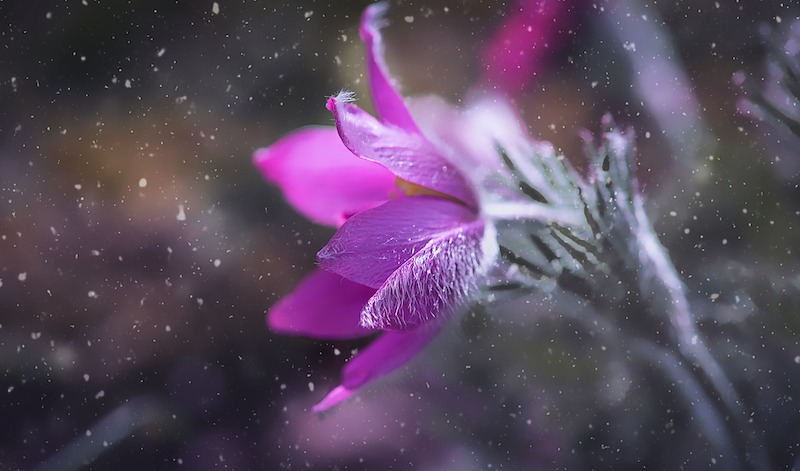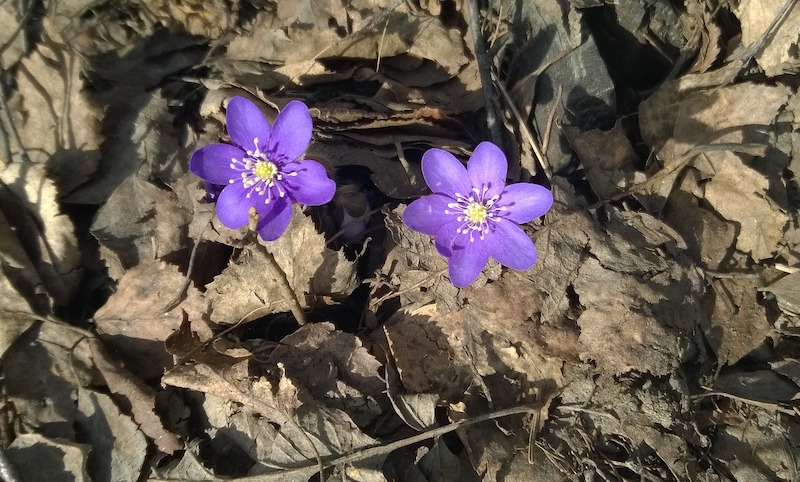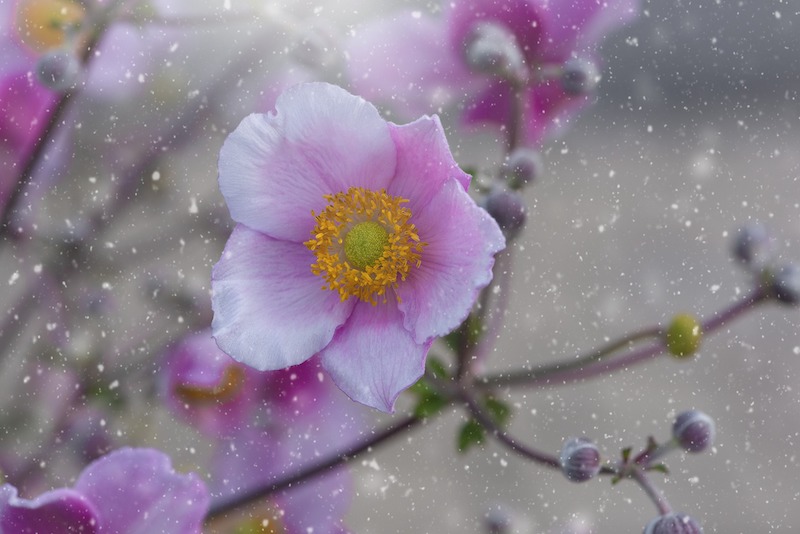Windflowers are a diverse group of colorful perennials within the Ranunculaceae family. Generally, windflowers are divided into spring- or fall-flowering varieties and are mostly grown in hardiness zones 4 to 8. Windflowers generally prefer to grow in daytime temperatures of 58 to 65 degrees Fahrenheit, but will suffer during harsh winters. Therefore, while growing windflowers in northern climates may be ideal during summers, special care must be taken during the winters.

Protecting Windflowers in Winter
To ensure your windflowers are protected from frost and freezing temperatures, apply a layer of mulch 3 to 4 inches deep in fall. Once new growth appears in the spring, it is time to remove the mulch.
In northern climates with harsh winters, it is important to dig up the corms/root clumps in the fall and store them inside over the winter. The cycle of digging corms in the fall will only work with fall-flowering varieties. Once flowering concludes in the fall and the foliage begins to die back (but before the first frost), dig up the corms/root clumps.
To ensure proper storage, dry corms/root clumps for 10-14 days in a warm, dry location away from direct sunlight. Once dried, store the corms/root clumps in peat moss, perlite, or vermiculite in a cool, dry place over winter. Soak corms for 12-24 hours and plant after the last typical frost. Alternatively, a couple weeks prior to last frost you may start your corms in a tray with potting soil to promote earlier flowering.

Cutting Back Windflowers For Winter
Do not immediately cut back foliage after flowering concludes. Windflowers will continue to make and store energy for next year’s growth/blooms after flowering. Only remove foliage after the plant has yellowed and died back (a good indicator is a gentle pull will remove the leaves from the root).

Windflower Winter Care in Pots
Potted windflowers do not typically adapt well to moving indoors for the winter. If night temperatures consistently reach below 32 degrees Fahrenheit, it is best to bring potted windflowers into an unheated greenhouse or other area that is sheltered while still providing the necessary winter chill period.
Watering Windflowers in Winter
In most climates, snow and rain over the winter will supply enough moisture for windflowers. However, in drier climates, it may be important to check the soil once a month to ensure the soil is still moist. Dehydrating windflowers (particularly freshly planted spring-flowering varieties) during the winter will diminish root development and stress the corms/root clumps.
Growing Windflowers Indoors
Potted windflowers may be grown indoors year-round, but they will require pruning after the plant has gone to seed if you do not allow them to have a winter chill period (which is highly recommended). You may harvest and save the seeds, and then cut the plant back hard (leaving approximately an inch of growth). The plant will continue to grow and flower again the following year.
Steps To Care For Windflowers in Winter
Windflowers will overwinter in milder climates with the help of an insulating layer of mulch. However, in areas with harsh winters, make sure to dig up corms/root clumps and bring them inside to protect them.
Step 1 - After foliage begins to die back (but before the first frost), remove the foliage.
Step 2 - If you are overwintering, apply 3-4 inches of mulch to insulate bulbs, and check the soil for moisture once a month (remove mulch when new growth appears).
Step 3 - If you are not overwintering, dig up corms/root clumps.
Step 4 - Dry corms for 10-14 days in a warm, dry location away from direct sunlight.
Step 5 - Store corms in peat moss, perlite, or vermiculite in a cool, dry place over winter.
Step 6 - Plant corms in the spring after the threat of frost is past.
 |
Author Chris Link - Published 07-21-2022 |
